Today, snowboard hardgoods make up a $1 billion global market, a third of which is owned by Burton. But when Jake Burton Carpenter and his wife Donna started the company in the early 1980s, few even knew about the sport. Back then, snowboards were little more than wooden planks with surfboard-like fins and ropes tethered to one end. The unwieldy design was largely unpopular until Burton burst onto the scene with the idea that a snowboard could be made like a ski.
Today, Burton is still the world’s leading snowboard company, and it’s beginning to dip its toe into activism — with internal and external campaigns around climate change and women’s empowerment. Conscious Company sat down with Donna Carpenter, who now serves as Burton’s CEO, to talk about the company’s roots, its values-driven future, and her unlikely journey from rebellious teen to change-making executive.
Burton At A Glance
• Location: Headquartered in Burlington, Vermont, with locations in Innsbruck, Tokyo, Beijing, Montreal, and Sydney
• Founded: 1977
• Employees: 1,000 globally
• Key Recognition: Jake and Donna Carpenter received a lifetime achievement at the 2018 Outdoor Inspiration Awards. In Spring 2018, Donna Carpenter received an Honorary PhD in business from Champlain College for her professional achievements leading a global company, advocating for equity in the workplace, expanding the marketplace, and promoting women’s leadership.
• Structure: Private for-profit company
• Memberships: Fair Labor Association, Bluesign, Protect Our Winters, CERES Business for Innovative Climate and Energy Policy Network, Outdoor Industry Association Sustainability Working Group
• Mission statement: “We are riders at heart. Everything else follows.”
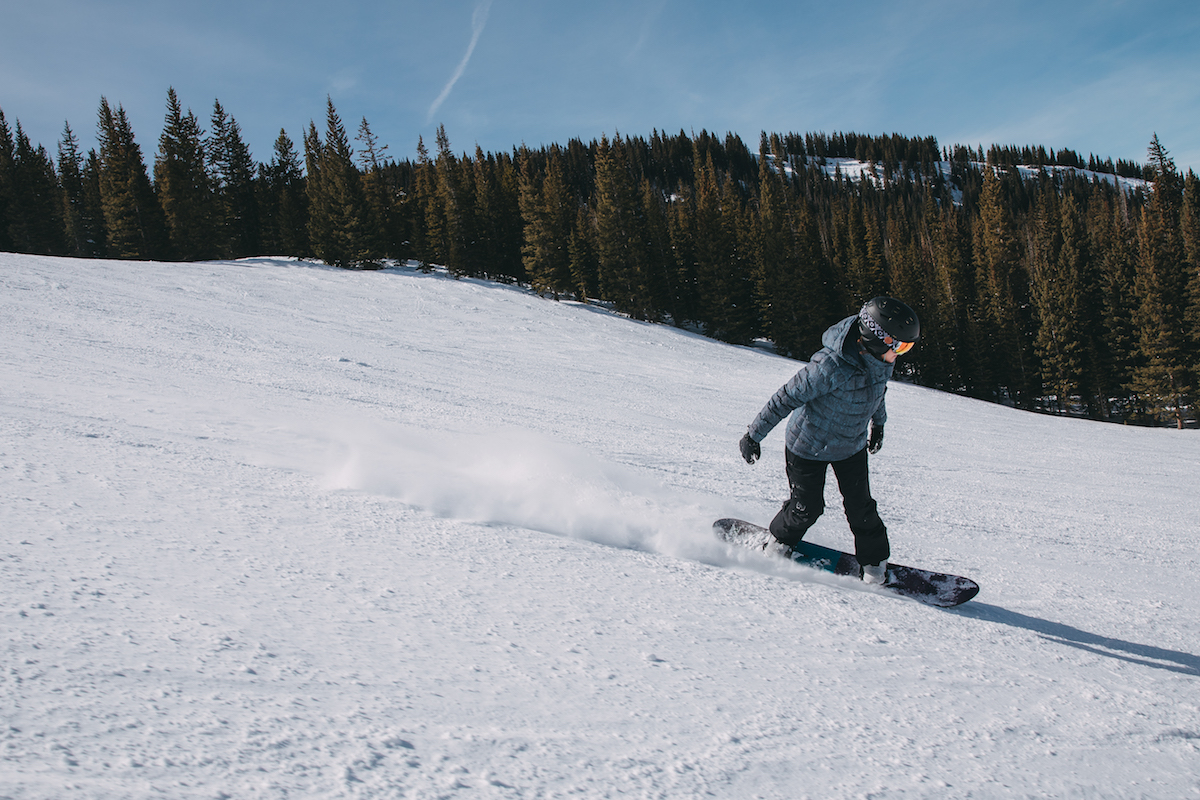
The Interview
Burton is the world’s first snowboard manufacturing company, and you’ve been a part of it almost since the beginning. How did you get involved with snowboarding and with the company?
Donna Carpenter: When I was a teenager, my family moved from a small town in Texas to a wealthy Connecticut suburb just outside of New York City. I was the rebel. I never quite felt that I belonged, but I always did well in school and soon moved on to college with a major in women’s studies. Then, I met a guy in a bar on New Year’s Eve, and my life changed radically.
In hindsight, I was looking for a tribe that shared my values, and I found it in the emerging snowboard community. I never planned to work in it, but a series of accidents brought me there. When I met Jake in the 1980s, he had a brand new idea that a snowboard could be made like a ski. At the time, snowboards were wooden blanks with ropes on the end and waterski bindings in the front. They had fins or skegs, like a surfboard, to make them track straight. But Jake had a sense that snowboards could be made like skis — with steel edges, P-Tex spaces, fiberglass, and wooden foam cores. He started the company around that concept, and soon it began to take off.
When Jake and I got married, we decided to move from Vermont to Austria, because all ski production was based in the Alps. I had a job lined up with a nonprofit there, but the demand was rising so quickly at Burton that soon I began fielding inquiries. The next thing I knew, I turned down the nonprofit job and, at 22 years old, I was setting up the company’s European operations.
You use words like “tribe” to describe snowboarders. Why do you feel snowboarding is a community unto itself?
DC: It felt that way because we were fighting against something. Looking back, snowboarding was the greatest innovation for the industry in 50 years, and they flat-out rejected it. The ski industry didn’t want us. We didn’t look, talk, or act like the traditional skier. We wanted to stand sideways on the mountain, and we had to fight for that right.
In that sense, snowboarding became more than a sport. It became a culture and a mindset of questioning authority. If you look at the freestyle, for example, it was all about individual expression. Snowboarders started using features on the mountain to express themselves. The whole sport centered around a spirit of open-mindedness and community.
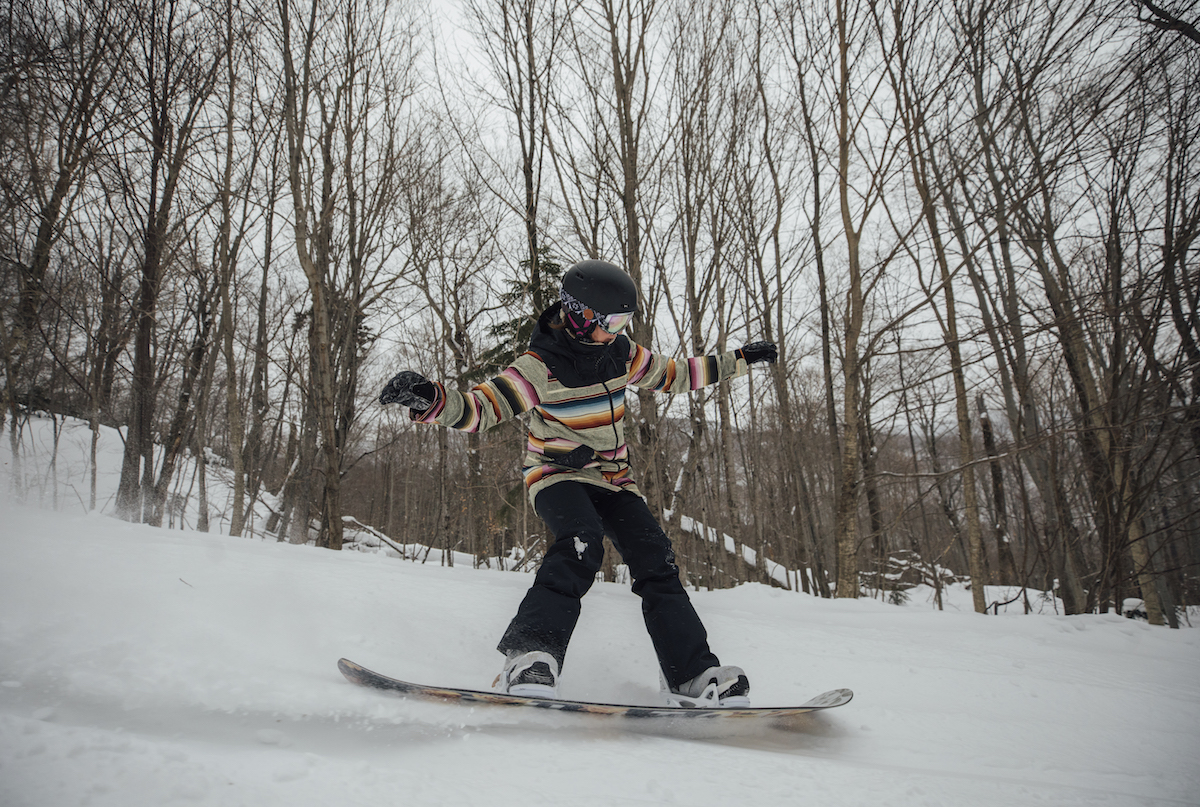
Even as a CEO, Donna Carpenter spends 80 days a year on the mountain.
How did this concept of a snowboarding tribe translate into a company? How did you maintain authenticity as the company grew and the sport became more mainstream?
DC: Jake had an entirely new idea about making snowboards, but beyond the mechanics, we found creative expression through graphics. At the time, partnering with artists to put graphics on equipment was unheard of in the industry, but it aligned with the snowboarding community’s roots in self expression.
When it comes to maintaining that community, you’re bound to make mistakes. We certainly did, but we’ve been able to come back around — in many ways by learning from others’ mistakes and growing from them. Take, for example, the surf industry. They had a legitimate lifestyle to sell — that Southern California lifestyle. Everyone wanted to be a part of it back in the ’70s and ’80s, but then they just got greedy. Companies went public and started looking to sell as much product in as short a time as possible. They stopped caring about quality and about what made it special.
Quite frankly, we were starting to make some of those mistakes right before the 2008 recession. We were putting too much product into the marketplace and, in retrospect, we stopped listening to our customers. We started adding brands — at one point we had 15 brands, ranging from skateboarding to surf. When the crisis forced us to take a step back, we used it as an opportunity to return to our roots, our values, and who we are as a company and as a community.
How would you describe Burton’s values as a company today?
DC: Passion is at the forefront for us. When we started the company, skiing had gone from a highly passionate industry driven by ski bums to a bunch of suits looking at spreadsheets who weren’t even involved in the sport. We made a commitment from the beginning to live our passion. Jake commits to spend 100 days a year on snow. I’m probably out there around 80 days a year, and we encourage our employees to get out there, too. We’re proactive about keeping ourselves and our team members connected to their passion.
Likewise, we underscore responsibility to the sport. It’s always been about the sport and about finding the best thing for snowboarding. Now, that translates into sustainability, because we have to protect the outdoor spaces we love in order to preserve the sport we love.
How does Burton live its values, even if it means less profit in the short term?
DC: Our sustainability efforts were a tough sell at first. We were one of the first athletic companies to adopt the Bluesign design standard — which calls for the most restrictive chemical use and the most efficient water use in the textile manufacturing sector. Eighty percent of our products are now Bluesign certified, and we’re aiming to be 100 percent certified by 2020.
Choosing Bluesign was more expensive, especially in the beginning. It’s cheaper now that Nike and other large companies have adopted it, but initially it was a challenge to convince our product teams that the change was worth it, because it meant a short-term financial hit.
For another example, in the early years of the company, we worked with an outside distributor in Japan. The numbers looked great, but their team didn’t understand us. They wore coats and ties to trade shows. They didn’t hire women. The company just didn’t align with who we are, so we decided to take over our own distribution. That year was tough, but it was the right move — and being a privately-held company allows us to make those types of decisions. We put money toward gender diversity and toward our environmental values, and being willing to do it even when it’s hard is how you convince people it’s a worthwhile expenditure.
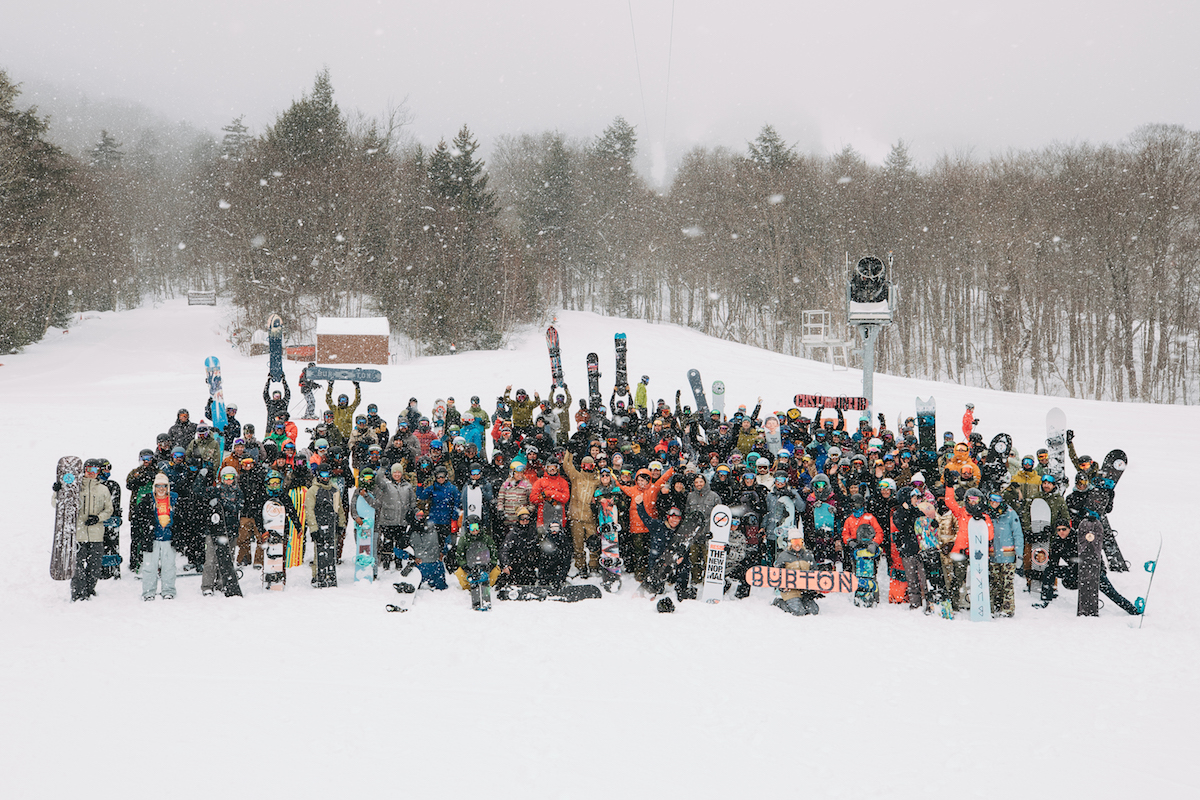
Burton employees take the slopes for the company’s annual Global Ride Day.
How does Burton’s focus on diversity and gender inclusivity overlap with this broader sense of belonging?
DC: Snowboarding was founded on diversity in many ways, although we still have a long way to go. In the beginning, we were a tribe of people who didn’t feel included, and we brought diversity to the existing mountain culture. Unlike other sports, both men and women pioneered snowboarding, so gender diversity was always part of the culture and of our company.
That being said, the snowboarding community has more work to do when it comes to ethnic and racial diversity, and that’s what I see as the next phase for this industry. We need to make sure people of all colors and backgrounds feel welcome. I worry about that with ski areas being so expensive and winter sports being culturally associated with the wealthy.
How does Burton do its part to make sure snowboarding feels inclusive to everyone?
DC: Once the company finally started making money, we began to think about ways we could give back. In doing so, we realized it was teenagers who put us on the map. In the 1980s, you couldn’t get a snowboard lesson. There was no beginner equipment. Yet teenagers were ordering our product, putting it together, and using it on the mountain. We wanted to give back to that demographic, and specifically to kids and teens who would never get the opportunity to do that today.
From that idea came the Chill Foundation, which we started 25 years ago in Burlington, Vermont. We’re now in 17 cities, and we teach 2,000 kids how to snowboard, skateboard, and surf each year. We use sport as a vehicle to talk about themes like pride, responsibility, persistence, and courage. It’s really become a cutting-edge youth development program that uses snowboarding and other board sports to help kids who are in tough situations.
The majority of our participants are kids of color, and many are new immigrants. I think we’re having an impact on helping communities integrate new kids and exposing kids to new possibilities. As an example, I recently spoke with a 17-year-old Chill participant from Denver. Although he grew up within view of the stunning Rocky Mountains, he said, “I never saw myself up there.” And now he does. It sounds simple, but it can be transformational.
How does Burton see the role of business in solving social problems?
DC: In the beginning, we never saw ourselves as change-makers. We just wanted to have fun, although the idea of connecting people to nature was always a strong component. Back in the ’80s, more and more ski areas were starting to build video arcades to give the teenagers something to do. It was almost like teenagers had already rejected traditional Alpine skiing culture, so getting people — especially kids and teens — outside was always part of the mission. Back then, we felt successful when the video arcades stopped popping up.
It wasn’t until we started getting involved in climate change advocacy, as well as advocating for more women in leadership, that I realized what we as a company could do. I’d never imagined that businesses could lead the way on these social issues, but they are.
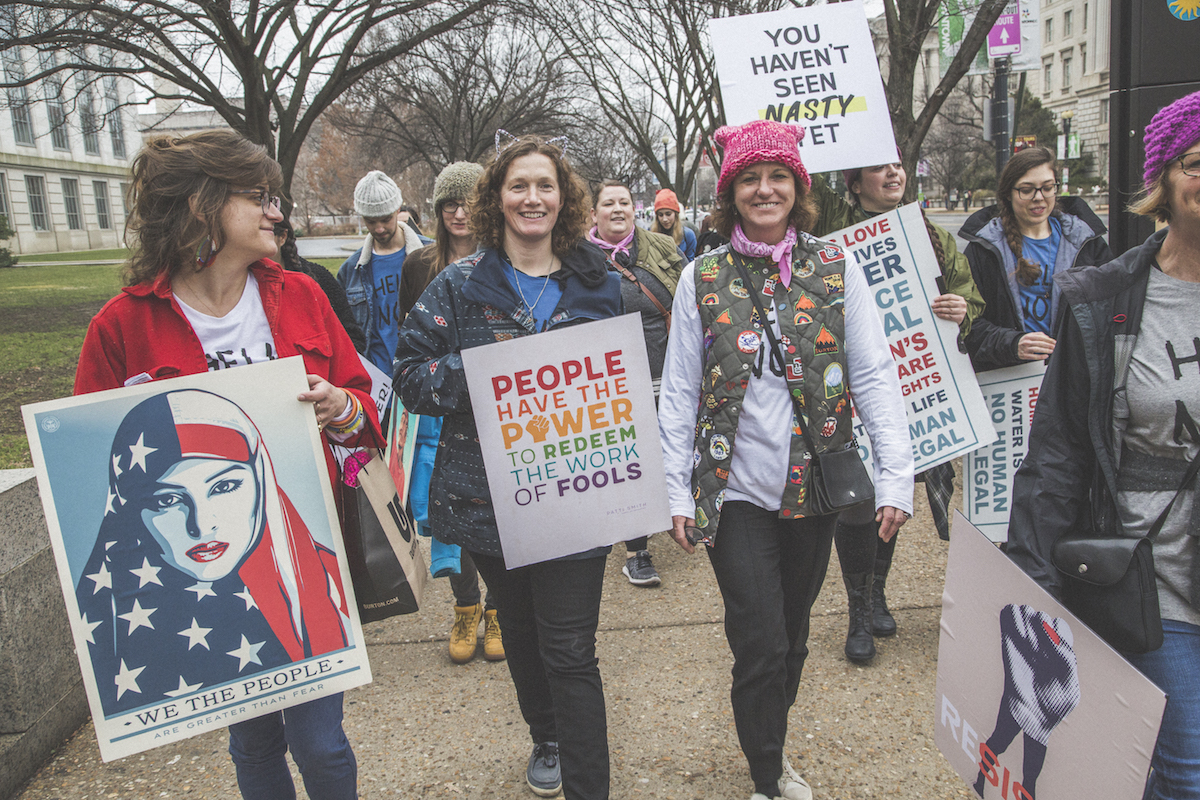
Donna Carpenter (right) and Burton employees at the Women’s March in January 2017.
As Burton evolves from a values-driven business into a business that recognizes itself as a force for good in the world, how are you engaging on social issues?
DC: After Donald Trump was elected and groups began organizing the Women’s March, I had no doubt that I’d attend. But I also thought, “Why shouldn’t every Burton woman who wants to be there have that opportunity?” I went to the senior team and told them I wanted the company to pay for transportation for any woman who wanted to go.
We were never an overtly political company and we got some backlash, but the response from our customers was overwhelmingly positive. To them, doing this made sense, because they knew we were involved women’s issues and that it was deeply personal for us.
That was our first big foray, and it gave us the confidence to speak up about other issues, such as climate change. We launched a partnership with Protect Our Winters, and we create educational materials in which athletes discuss climate issues and solutions. For us, it’s about finding ways to talk about these issues that make sense for the company and our customers. Companies could be apolitical in the past, but now they’re expected to take a stand.
Burton advocates for more women in snowboarding and positions itself as an activist around women’s issues. What does that look like for the company internally?
DC: It’s a lot of hard work. Fourteen years ago, I spoke with about 60 former and current female employees about the issues that matter to them. I thought it would be a short-term project, but they still get together to this day. At the time, maternity and post-maternity were top of mind, so we ran with that first. We introduced a program to subsidize childcare and make it easier for new parents to do the business travel we require by paying for traveling caretakers for their children.
Then, based on the same conversations, we addressed recruiting. When we put out an ad for a leadership role, the applicants were almost all men, so we instituted a rule that required at least one female finalist for every leadership job. Mangers weren’t obliged to hire that female, but the rule required them to work harder to recruit female applicants, because they weren’t necessarily coming to us.
After that, we focused on retention and advancement. We started a mentoring program for female employees and launched an all-day women’s leadership training. After about five years, the mentoring program was so successful that we made it co-ed and available to all of our employees. We’ve since built a culture around mentoring and coaching, which all began with this pilot women’s group.
Overall, it’s about being proactive and intentional. We weren’t out to instate quotas or give women more resources than men, but we knew we needed to change our numbers around women in leadership — and we did.
How do you communicate these efforts to your customers?
DC: That was a big shift for us. We used to see ourselves as product marketers, and we didn’t think the customer wanted to know what we were doing behind the scenes. That’s changed. This generation wants to know about your values and the work you do. We didn’t change how we lived our values. The big change was that we started talking about it.
If you go to our Instagram feed now, you’ll learn about the Chill Foundation, for example. We operated that program for 25 years, but we never put it on Burton social media, because for some reason we didn’t think the customer was interested. Now, you’re more likely to see a post on Preserve Our Winters or Chill than you are a new product.
How would you describe yourself as a leader?
DC: I learn by doing, and that’s always been the most effective method for me. I always joked that I knew nothing about how to do business in Europe when I started running operations there, but that humility allowed us to succeed.
Over the years, I’ve had to move from doing to managing, and now I see my biggest role as breaking down silos. The higher I got, the more I realized how separated we still are. The different company departments often operate independently rather than talking with one another, so I try to push a more collaborative approach.
I like to say I’m a leader who challenges other people to step up. I’m not the manager who will tell you how to do something. I’ll talk to you about the problem at hand and the tools you need to solve it, but I want to step aside and let people solve problems on their own. It’s not always easy. It’s much easier to dictate to people, but at the same time it’s much more rewarding to help people realize they can do it themselves.
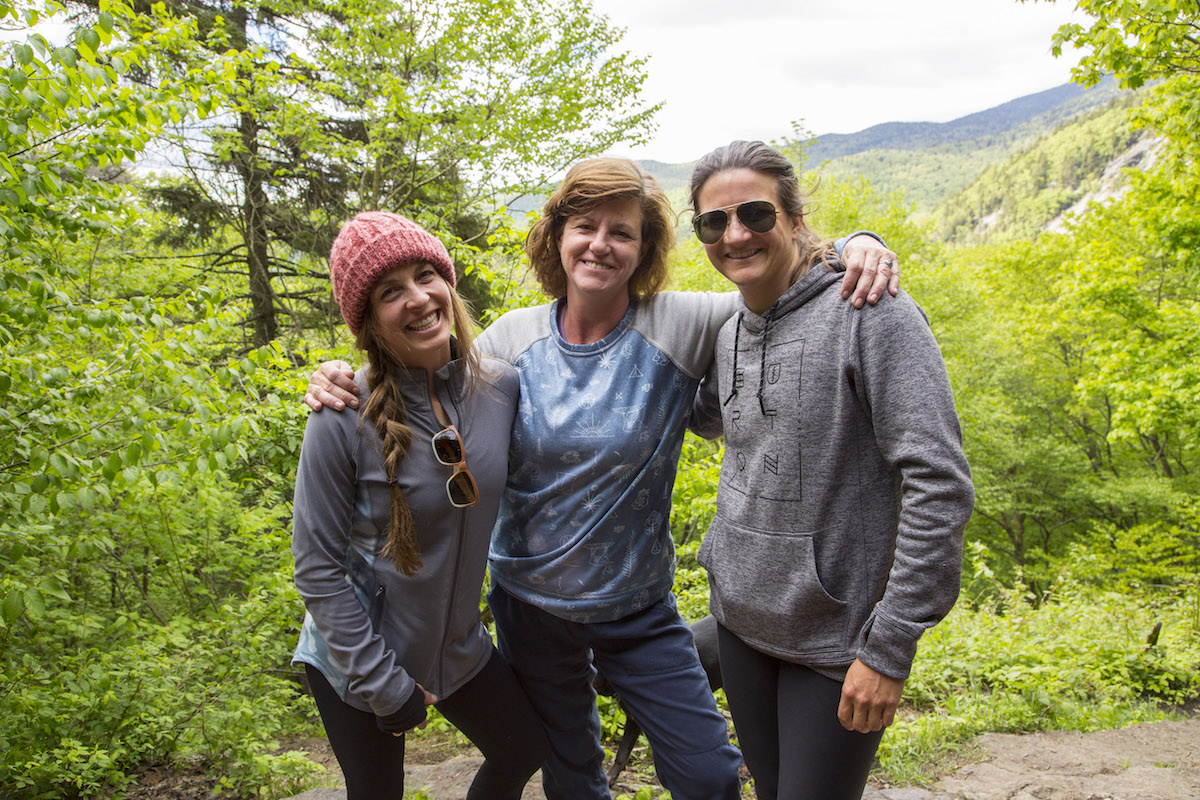
Donna Carpenter (center) on a hike with Burton employees.
How do you keep yourself grounded and sane? What daily routines do you use to avoid stress?
DC: It sounds silly, but if I go too long without snowboarding, I start to wonder what I’m doing in work and life. Making time to get out on the mountain, both in summer and winter, is important to me — and I try to encourage all of our employees to do it, too, and to see it as productive rather than a waste of time.
At Burton, we incorporate time on the mountain into our regular operations. We have meetings at the lodge, and then we go outside together. I think that comes from recognizing that the ski industry is mostly full of people who stopped skiing. There was a time that we stopped, because we were so stressed with the business, but we’re back to making it a priority. If it snows two feet or more, the office closes.
I realized long ago that I’m the only one who can take care of myself, and a big part of that is getting outside. I want all of our employees to have that same opportunity.
What’s your top piece of advice for CEOs in the outdoor industry and beyond?
DC: Measure the success of your company beyond financial results. Financial results are a component of success, but so are brand authenticity, culture, and community. I don’t think enough CEOs pay attention to the culture of their companies and making sure that their communities are strong and healthy. It’s harder to measure, but it’s worthwhile to pay attention.
What gives you hope?
DC: It’s encouraging to see business take the lead on issues like climate change and diversity. We once looked to our governments to solve these problems, but then we realized they weren’t doing enough — and in some cases, they were making the problems worse.
When North Carolina passed its discriminatory bathroom law, for example, the reaction from the business community actually convinced lawmakers to change their policies. Now, it’s not unusual to see the CEOs of major companies like Levi’s or Kellogg come together to talk about climate change and, to me, that presents a promising outlook for the future.




